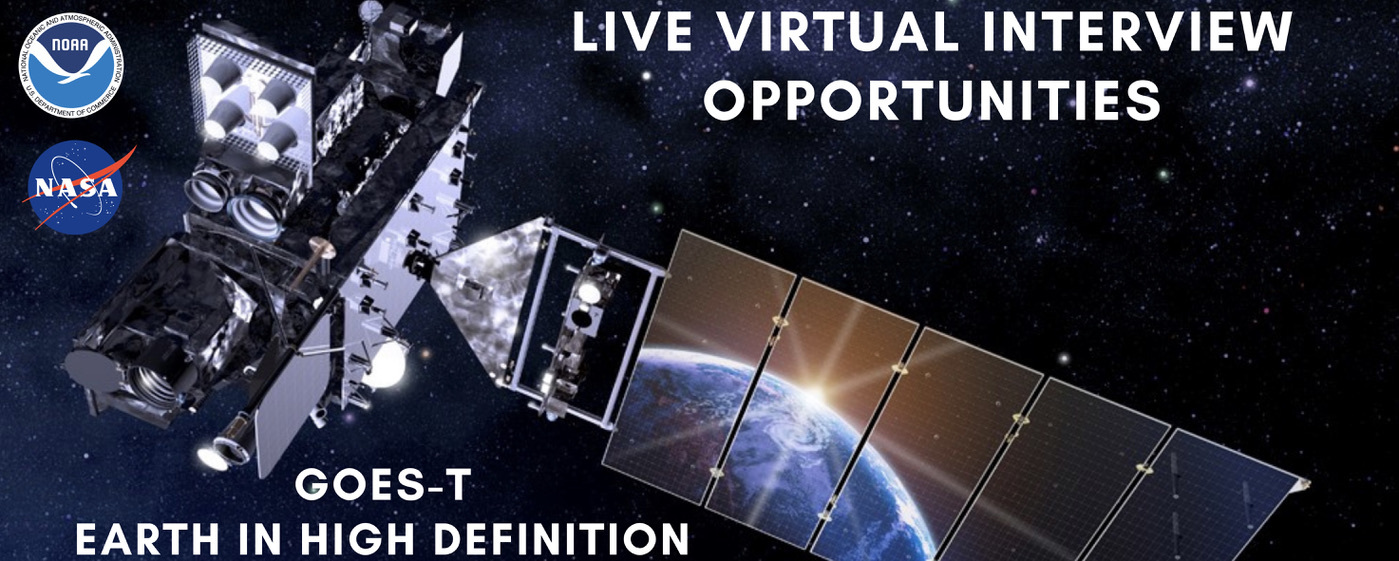Geostationary Operational Environmental Satellite (GOES) East and West
This animation depicts the areas of the Earth viewed by GOES-East and GOES-West from their vantage point 22,236 miles above the equator.
This video is also available on our YouTube channel.
NOAA maintains a two-satellite Geostationary Operational Environmental Satellite (GOES) constellation to watch over the Western Hemisphere. The satellites circle the Earth in geosynchronous orbit, which means they orbit the Earth’s equatorial plane at a speed matching the Earth’s rotation. This allows them to stay in a fixed position in the sky, remaining stationary with respect to a point on the ground.
GOES-16 serves at as NOAA’s GOES-East satellite, located at 75.2 degrees west longitude. GOES-S, GOES-16’s sister satellite, scheduled for launch in March 2018, will be renamed GOES-17 upon reaching geostationary orbit. GOES-17 will take its place as NOAA’s operational GOES-West satellite in late 2018. In the GOES-West position, GOES-17 will be located at 137 degrees west longitude. Together, GOES-16 and GOES-17 will keep an eye on the Western Hemisphere’s atmosphere, weather patterns and environmental hazards from the west coast of Africa all the way to New Zealand.

Print resolution still image depicting GOES-East and GOES-West in geosynchronous orbit over the Western Hemisphere. Satellite field of views are represented by orange (GOES-East) and blue (GOES-West) cones.

Print resolution still image depicting GOES-East and GOES-West in geosynchronous orbit over the Western Hemisphere. Satellite field of views are represented by orange (GOES-East) and blue (GOES-West) cones.

Print resolution still image showing cities in view of the GOES-East and GOES-West satellites

Print resolution still image showing cities in view of the GOES-East and GOES-West satellites
Credits
Please give credit for this item to:
NASA's Scientific Visualization Studio
-
Visualizer
- Kel Elkins (USRA)
-
Technical support
- Laurence Schuler (ADNET Systems, Inc.)
- Ian Jones (ADNET Systems, Inc.)
-
Producer
- Michael Starobin (KBR Wyle Services, LLC)
-
Outreach coordinator
- Michelle Smith (ADNET Systems, Inc.)
Release date
This page was originally published on Wednesday, January 31, 2018.
This page was last updated on Monday, July 15, 2024 at 12:05 AM EDT.
Datasets used in this visualization
-
STK Ephemeris (Satellite ToolKit Ephemeris)
ID: 754Satellite ephemerides
See all pages that use this dataset
Note: While we identify the data sets used in these visualizations, we do not store any further details, nor the data sets themselves on our site.


![GOES-T Overview and Upcoming Launch Music: "Spacey Wave," by JC Lemay [SACEM]; Koka; Universal Production MusicAdditional footage provided by Lockheed Martin](/vis/a010000/a014000/a014073/GOEST_Overview_FINAL.01901_print.jpg)

